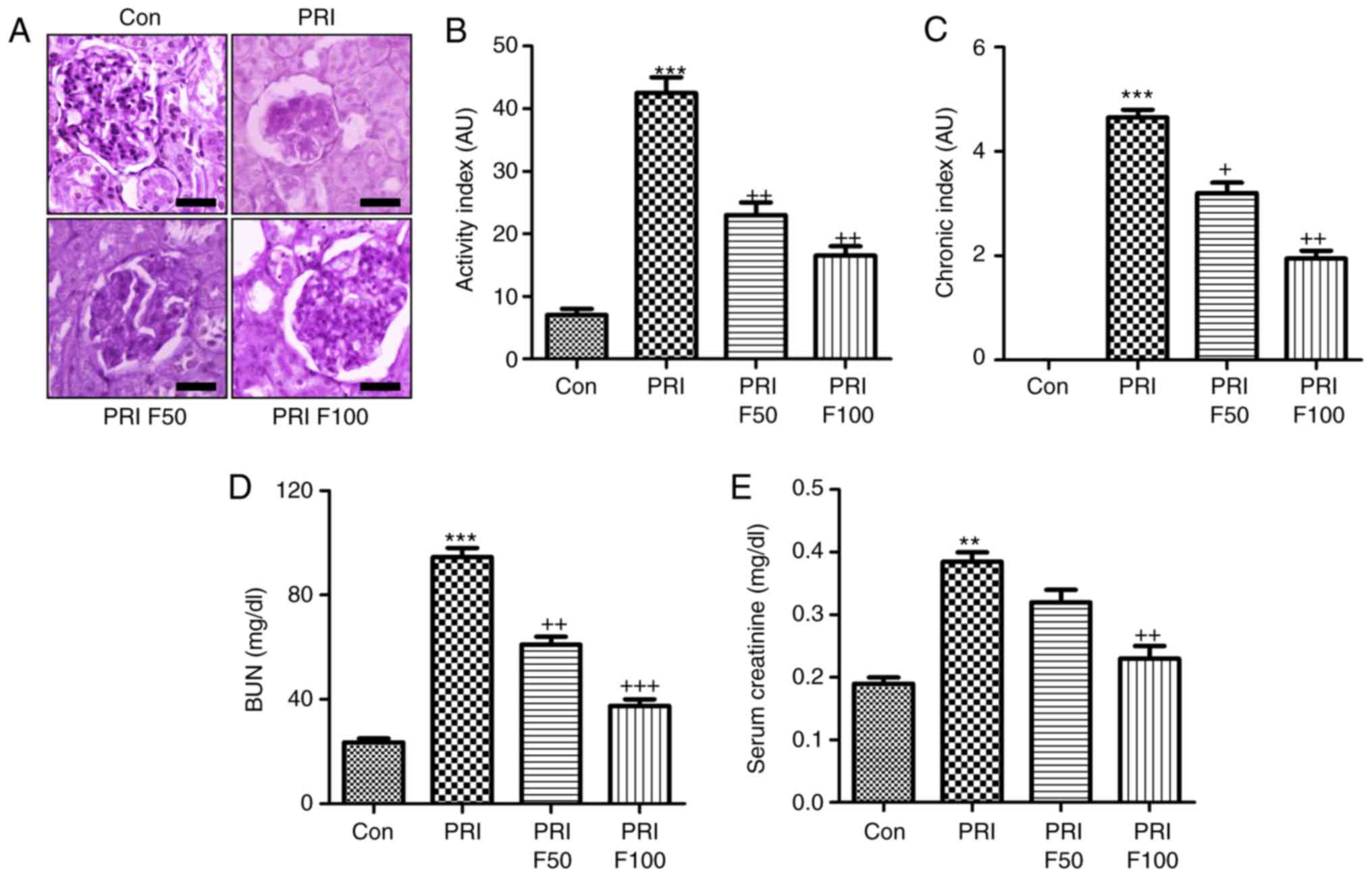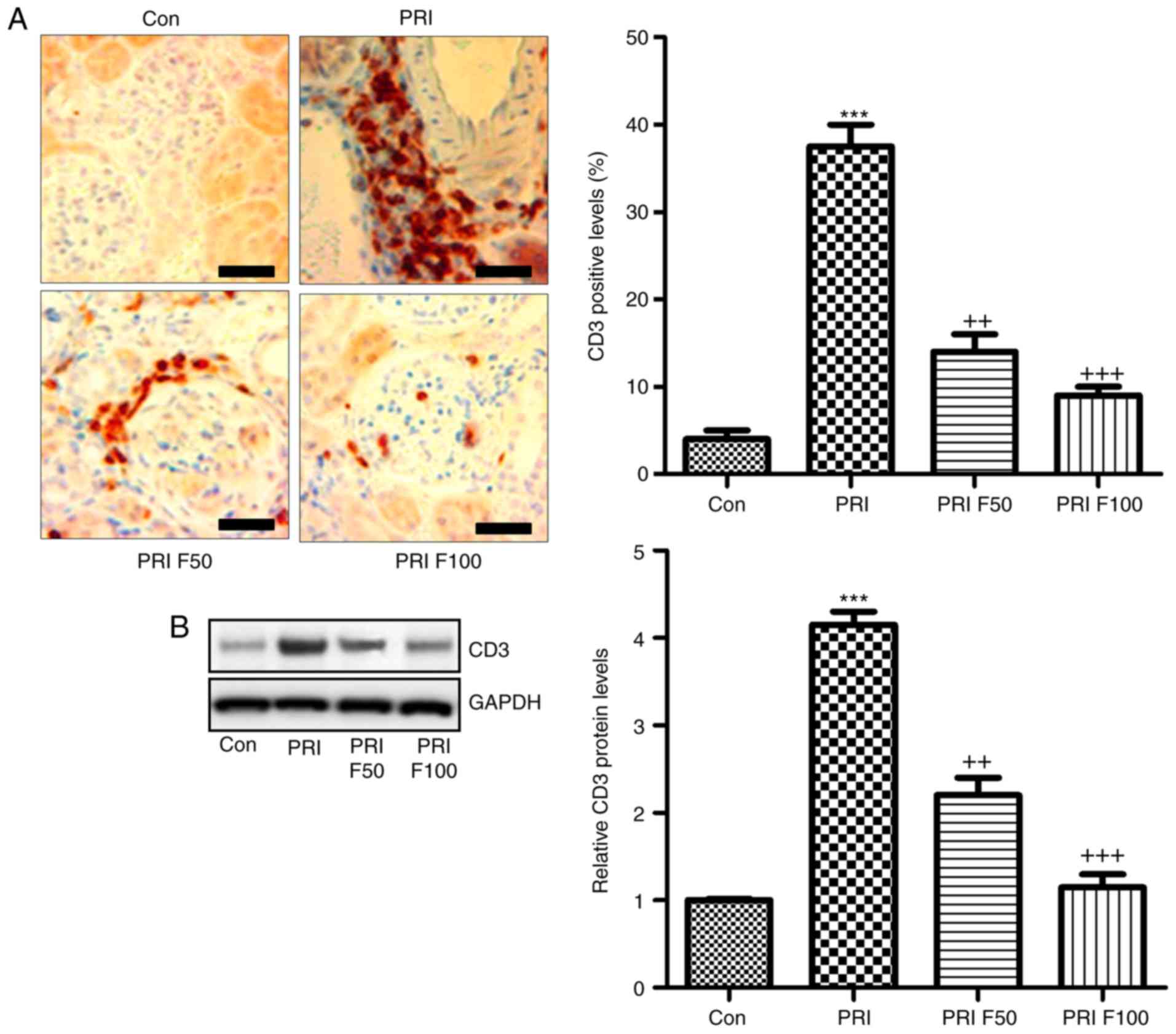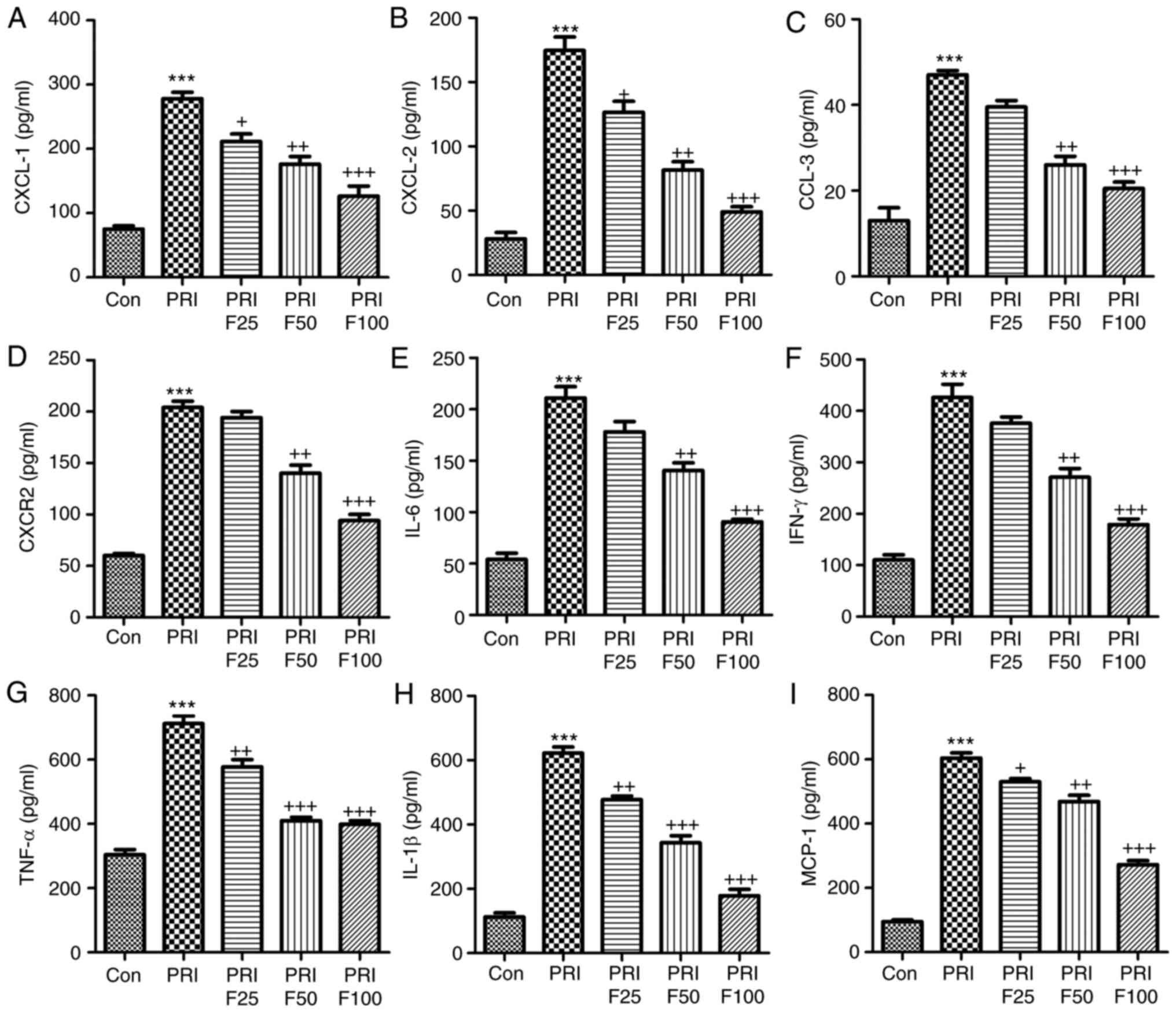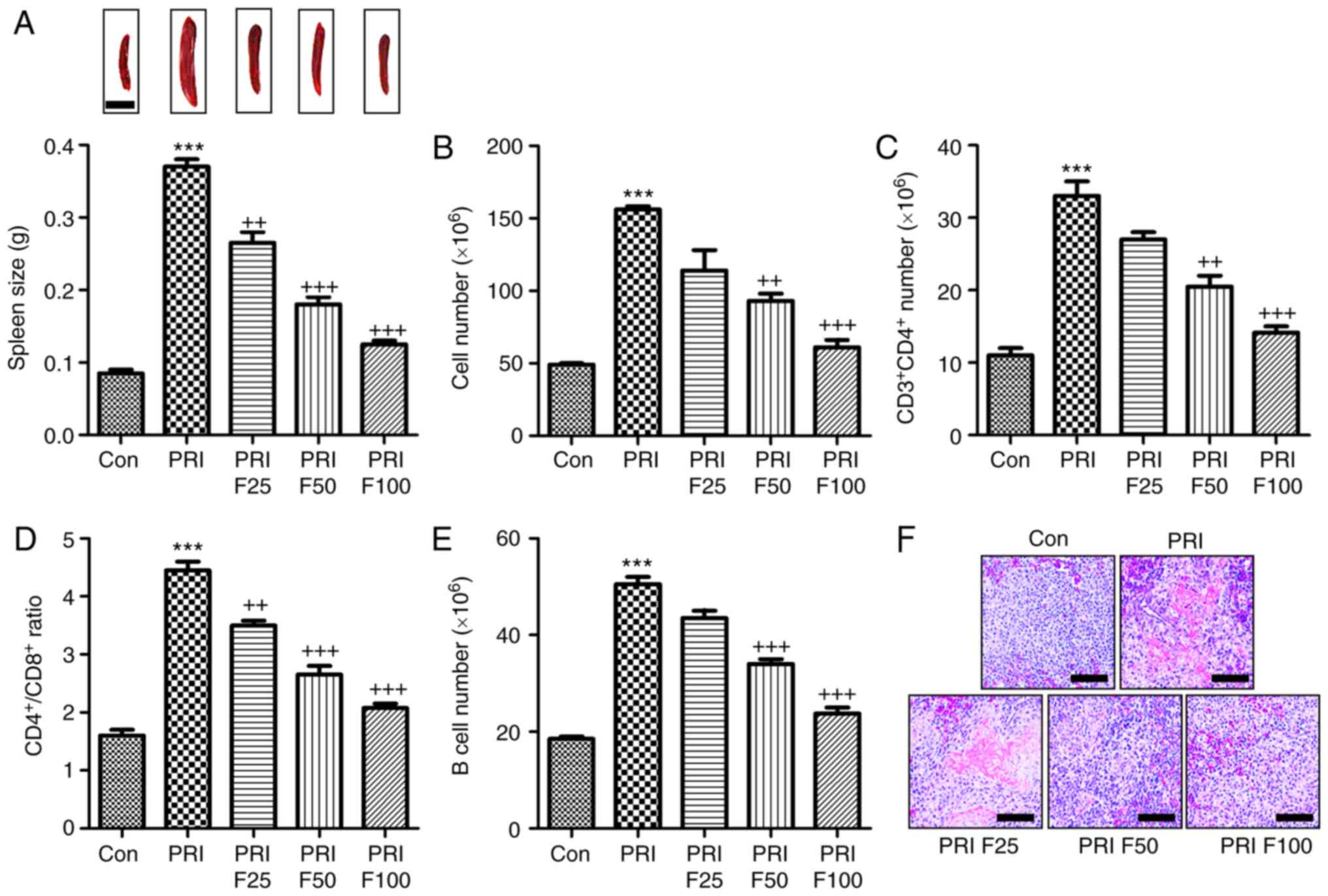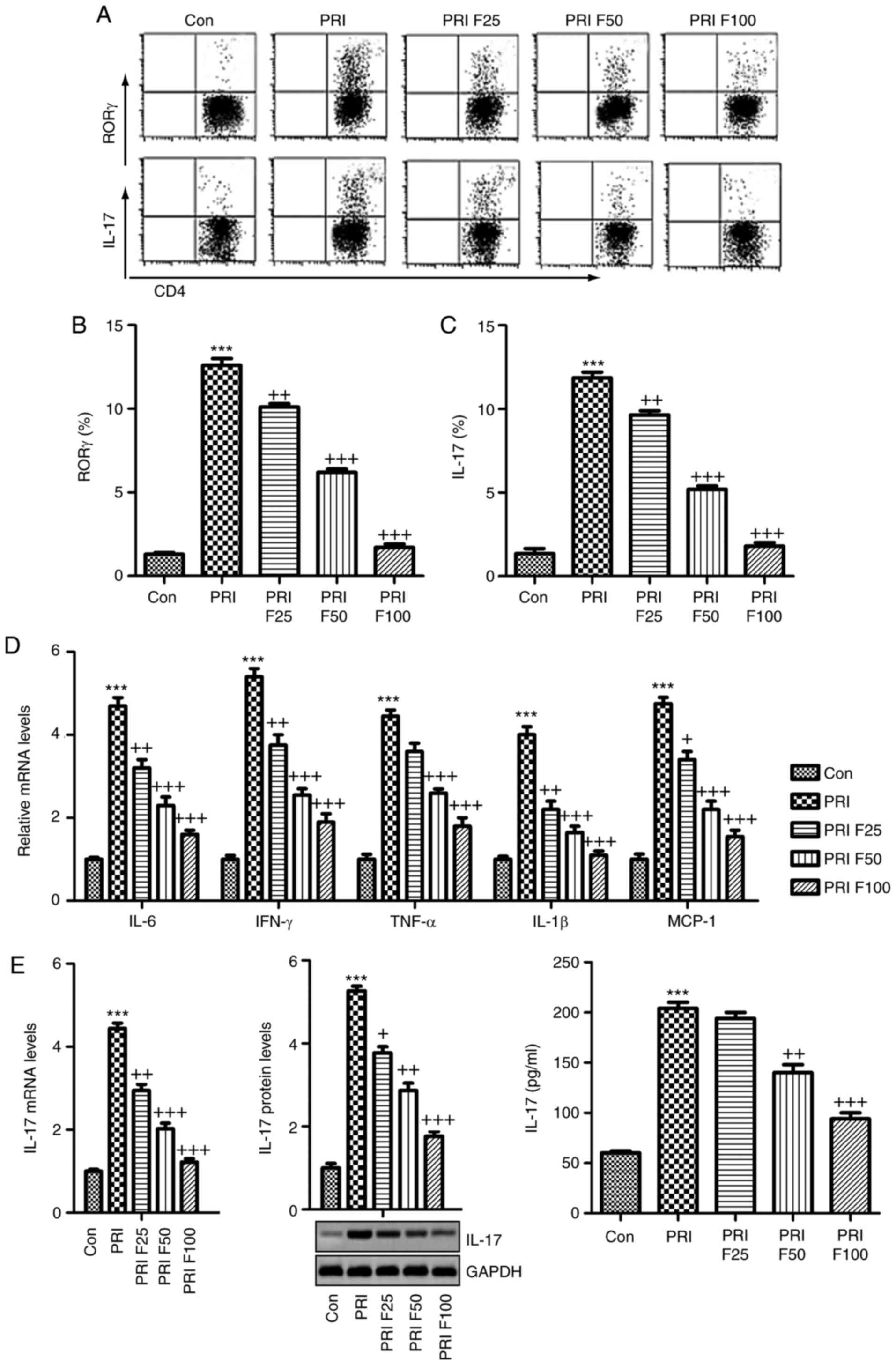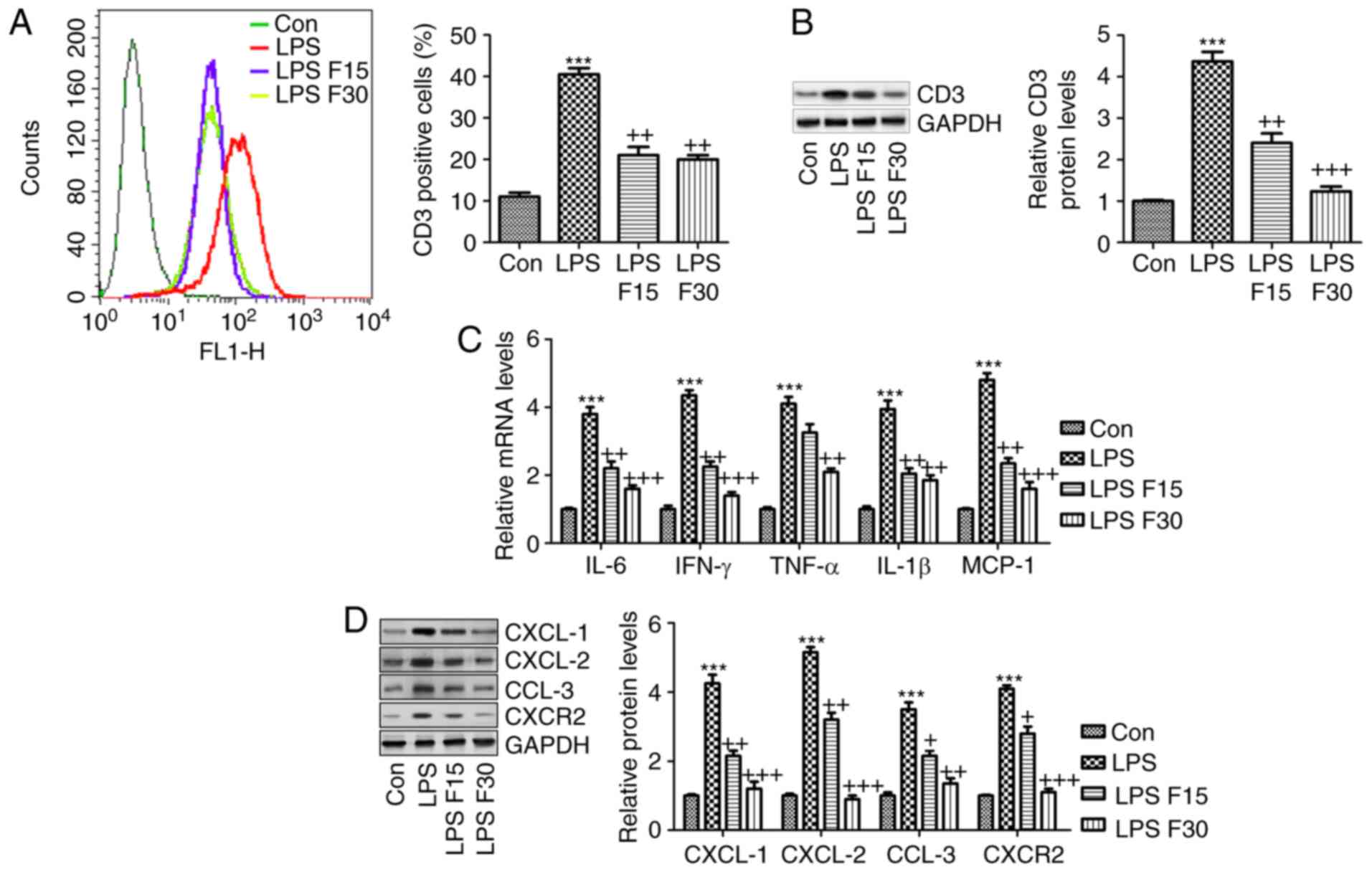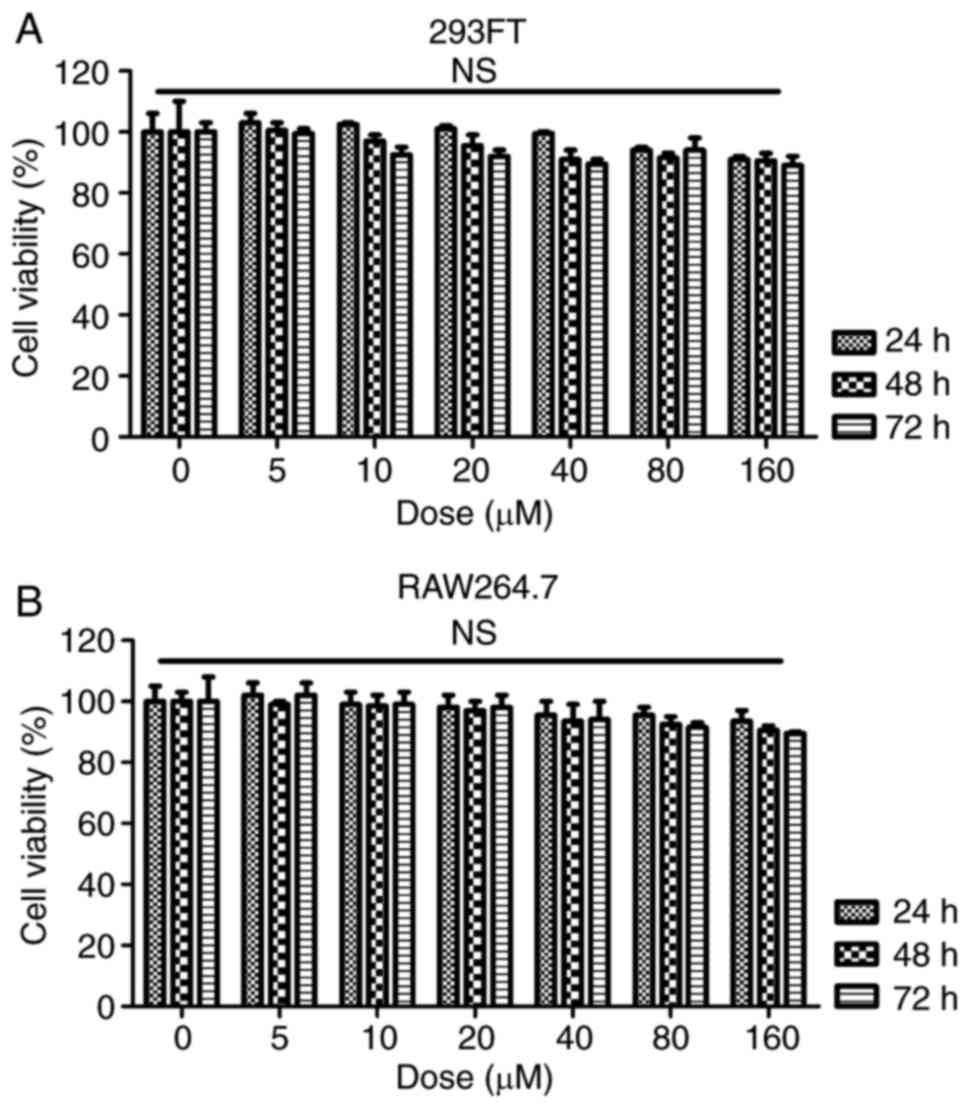|
1
|
Mikdashi JA, Wozniak M, Ashraf U and
Regenold W: Patterns of vascular brain injury in systemic lupus
e2rythematosus patients with ischemic strokes: Impact on
neuropsychological, neurobehavioral and physical function outcome.
Arthritis Rheumatol. 67:3568–3569. 2015.
|
|
2
|
Ajeganova S, Gustafsson T, Jogestrand T,
Frostegård J and Hafström I: Bone mineral density and carotid
atherosclerosis in systemic lupus erythematosus: A controlled
cross-sectional study. Arthritis Res Ther. 17:842015. View Article : Google Scholar : PubMed/NCBI
|
|
3
|
Fischer K, Sawicki M, Chamiak-Ciemińska K,
Stolarczyk J, Winikajtis-Burzyńska A, Milchert M, Ostanek L,
Bobrowska-Snarska D, Kapłon Ł, Przepiera-Będzak H, et al: A5.07 The
role of immunologic and inflammatory factors in the risk of
microvascular and macrovascular impairment development in systemic
lupus erythematosus-preliminary data. Ann Rheum Dis. 75:A44. 2016.
View Article : Google Scholar
|
|
4
|
Abou-Raya A, Abou-Raya S and Helmii M: The
effect of vitamin D supplementation on inflammatory and hemostatic
markers and disease activity in patients with systemic lupus
erythematosus: A randomized placebo-controlled trial. J Rheumatol.
40:265–272. 2013. View Article : Google Scholar
|
|
5
|
Leffler J, Martin M, Gullstrand B, Tydén
H, Lood C, Truedsson L, Bengtsson AA and Blom AM: Neutrophil
extracellular traps that are not degraded in systemic lupus
erythematosus activate complement exacerbating the disease. J
Immunol. 188:3522–3531. 2012. View Article : Google Scholar : PubMed/NCBI
|
|
6
|
Choi J, Kim ST and Craft J: The
pathogenesis of systemic lupus erythematosusan update. Curr Opin
Immunol. 24:651–657
|
|
7
|
Madhok R: Systemic lupus erythematosus:
Lupus nephritis. BMJ Clin Evidence. 2015.1123:2015
|
|
8
|
Alunno A, Bartoloni E, Bistoni O,
Nocentini G, Ronchetti S, Caterbi S, Valentini V, Riccardi C and
Gerli R: Balance between regulatory T and Th17 cells in systemic
lupus erythematosus: The old and the new. Clin Dev Immunol.
2012.823085:2012.
|
|
9
|
Wahren-Herlenius M and Dörner T:
Immunopathogenic mechanisms of systemic autoimmune disease. Lancet.
382:819–831. 2013. View Article : Google Scholar : PubMed/NCBI
|
|
10
|
Shirota Y, Yarboro C, Fischer R, Pham TH,
Lipsky P and Illei GG: Impact of anti-interleukin-6 receptor
blockade on circulating T and B cell subsets in patients with
systemic lupus erythematosus. Ann Rheum Dis. 72:118–128. 2013.
View Article : Google Scholar
|
|
11
|
Hundorfean G, Neurath MF and Mudter J:
Functional relevance of T helper 17 (Th17) cells and the IL-17
cytokine family in inflammatory bowel disease. Inflamm Bowel Dis.
18:180–186. 2012. View Article : Google Scholar
|
|
12
|
Zhang W, Cai Y, Xu W, Yin Z, Gao X and
Xiong S: AIM2 facilitates the apoptotic DNA-induced systemic lupus
erythematosus via arbitrating macrophage functional maturation. J
Clin Immunol. 33:925–937. 2013. View Article : Google Scholar : PubMed/NCBI
|
|
13
|
Sun W, Jiao Y, Cui B, Gao X, Xia Y and
Zhao Y: Immune complexes activate human endothelium involving the
cell-signaling HMGB1-RAGE axis in the pathogenesis of lupus
vasculitis. Lab Invest. 93:626–638. 2013. View Article : Google Scholar : PubMed/NCBI
|
|
14
|
Adhami VM, Syed DN, Khan N and Mukhtar H:
Dietary flavonoid fisetin: A novel dual inhibitor of PI3K/Akt and
mTOR for prostate cancer management. Biochem Pharmacol.
84:1277–1281. 2012. View Article : Google Scholar : PubMed/NCBI
|
|
15
|
Ying TH, Yang SF, Tsai SJ, Hsieh SC, Huang
YC, Bau DT and Hsieh YH: Fisetin induces apoptosis in human
cervical cancer HeLa cells through ERK1/2-mediated activation of
caspase-8-/caspase-3-dependent pathway. Arch Toxicol. 86:263–273.
2012. View Article : Google Scholar
|
|
16
|
Currais A, Prior M, Dargusch R, Armando A,
Ehren J, Schubert D, Quehenberger O and Maher P: Modulation of p25
and inflammatory pathways by fisetin maintains cognitive function
in Alzheimer's disease transgenic mice. Aging Cell. 13:379–390.
2014. View Article : Google Scholar
|
|
17
|
Mitra S, Biswas S, Sinha A, Jana NR and
Banerjee EM: Therapeutic use of fisetin and fisetin loaded on
mesoporous carbon nanoparticle (MCN) in thioglycollate-induced
peritonitis. J Nanomed Nanotechnol. 6:3322015. View Article : Google Scholar
|
|
18
|
Rabb H, Noel S, Martina-Lingua MN, Racusen
LC, Hamad AR and Bandapalle S: Compositions and methods for the
study and treatment of acute kidney injury. US Patent 14/930,883.
Filed November 3, 2015 issued May 5, 2016.
|
|
19
|
Summers SA, Odobasic D, Khouri MB,
Steinmetz OM, Yang Y, Holdsworth SR and Kitching AR: Endogenous
interleukin (IL)-17A promotes pristane-induced systemic
autoimmunity and lupus nephritis induced by pristane. Clin Exp
Immunol. 176:341–350. 2014. View Article : Google Scholar : PubMed/NCBI
|
|
20
|
Léotoing L, Davicco MJ, Lebecque P,
Wittrant Y and Coxam V: The flavonoid fisetin promotes osteoblasts
differentiation through Runx2 transcriptional activity. Mol Nutr
Food Res. 58:1239–1248. 2014. View Article : Google Scholar : PubMed/NCBI
|
|
21
|
Lee JD, Huh JE, Jeon G, Yang HR, Woo HS,
Choi DY and Park DS: Flavonol-rich RVHxR from rhus verniciflua
stokes and its major compound fisetin inhibits inflammation-related
cytokines and angiogenic factor in rheumatoid arthritic
fibroblast-like synovial cells and in vivo models. Int
Immunopharmacol. 9:268–276. 2009. View Article : Google Scholar
|
|
22
|
Feng D, Yang L, Bi X, Stone RC, Patel P
and Barnes BJ: Irf5-deficient mice are protected from
pristane-induced lupus via increased Th2 cytokines and altered IgG
class switching. Eur J Immunol. 42:1477–1487. 2012. View Article : Google Scholar : PubMed/NCBI
|
|
23
|
Angius F and Floris A: Liposomes and MTT
cell viability assay: An incompatible affair. Toxicology In Vitro.
29:314–319. 2015. View Article : Google Scholar
|
|
24
|
Donnenberg VS and Donnenberg A: Flow
cytometry on disaggregated solid tissues. Int Drug Discov. 6:14–18.
2011.
|
|
25
|
Yuan JS, Wang D and Stewart CN:
Statistical methods for efficiency adjusted real-time PCR
quantification. Biotechnol J. 3:112–123. 2008. View Article : Google Scholar
|
|
26
|
Ding Q, Zhao M, Yu B, Bai C and Huang Z:
Identification of tetraazacyclic compounds as novel potent
inhibitors antagonizing RORγt activity and suppressing Th17 cell
differentiation. PloS One. 10:e01377112015. View Article : Google Scholar
|
|
27
|
Janda J, Plattet P, Torsteinsdottir S,
Jonsdottir S, Zurbriggen A and Marti E: Generation of equine
TSLP-specific antibodies and their use for detection of TSLP
produced by equine keratinocytes and leukocytes. Vet Immunol
Immunopathol. 147:180–186. 2012. View Article : Google Scholar : PubMed/NCBI
|
|
28
|
Clowse MEB, Chakravarty E, Costenbader KH,
Chambers C and Michaud K: Effects of infertility, pregnancy loss,
and patient concerns on family size of women with rheumatoid
arthritis and systemic lupus erythematosus. Arthritis Care Res.
64:668–674. 2012. View Article : Google Scholar
|
|
29
|
Chung SA, Brown EE, Williams AH, Ramos PS,
Berthier CC, Bhangale T, Alarcon-Riquelme ME, Behrens TW, Criswell
LA, Graham DC, et al: Lupus nephritis susceptibility loci in women
with systemic lupus erythematosus. J Am Soc Nephrol. 25:2859–2870.
2014. View Article : Google Scholar : PubMed/NCBI
|
|
30
|
Askanase A, Shum K and Mitnick H: Systemic
lupus erythematosus: An overview. Soc Work Health Care. 51:576–586.
2012. View Article : Google Scholar : PubMed/NCBI
|
|
31
|
Llanos C, Mackern-Oberti JP, Vega F,
Jacobelli SH and Kalergis KM: Tolerogenic dendritic cells as a
therapy for treating lupus. Clin Immunol. 148:237–245. 2013.
View Article : Google Scholar : PubMed/NCBI
|
|
32
|
Shen N, Liang D, Tang Y and Tak PP:
MicroRNAs-novel regulators of systemic lupus erythematosus
pathogenesis. Nat Rev Rheumatol. 8:701–709. 2012. View Article : Google Scholar : PubMed/NCBI
|
|
33
|
Talaat RM, Mohamed SF and Bassyouni IH:
Th1/Th2/Th17/Treg cytokine imbalance in systemic lupus
erythematosus (SLE) patients: Correlation with disease activity.
Cytokine. 72:146–153. 2015. View Article : Google Scholar : PubMed/NCBI
|
|
34
|
Xing Q, Wang B, Su H, Cui J and Li J:
Elevated Th17 cells are accompanied by FoxP3+ Treg cells decrease
in patients with lupus nephritis. Rheumatol Int. 32:949–958. 2012.
View Article : Google Scholar
|
|
35
|
Chatterjee M, Rauen T, Kis-Toth K,
Kyttaris VC, Hedrich CM, Terhorst C and Tsokos GC: Increased
expression of SLAM receptors SLAMF3 and SLAMF6 in systemic lupus
erythematosus T lymphocytes promotes Th17 differentiation. J
Immunol. 188:1206–1212. 2012. View Article : Google Scholar :
|
|
36
|
Yu Y, Liu Y, Shi FD, Zou H, Matarese G and
La Cava A: Cutting edge: Leptin-induced RORγt expression in
CD4+ T cells promotes Th17 responses in systemic lupus
erythematosus. J Immunol. 190:3054–3058. 2013. View Article : Google Scholar : PubMed/NCBI
|
|
37
|
Reeves WH, Lee PY, Weinstein JS, Satoh M
and Lu L: Induction of autoimmunity by pristane and other naturally
occurring hydrocarbons. Trends Immunol. 30:455–464. 2009.
View Article : Google Scholar : PubMed/NCBI
|
|
38
|
Persson EK, Uronen-Hansson H, Semmrich M,
Rivollier A, Hägerbrand K, Marsal J, Gudjonsson S, Håkansson U,
Reizis B, Kotarsky K, et al: IRF4 transcription-factor-dependent
CD103+CD11b+ dendritic cells drive mucosal T
helper 17 cell differentiation. Immunity. 38:958–969. 2013.
View Article : Google Scholar : PubMed/NCBI
|
|
39
|
Chen DY, Chen YM, Wen MC, Hsieh TY, Hung
WT and Lan JL: The potential role of Th17 cells and Th17-related
cytokines in the pathogenesis of lupus nephritis. Lupus.
21:1385–1396. 2012. View Article : Google Scholar : PubMed/NCBI
|
|
40
|
Barbado J, Martin D, Vega L, Almansa R,
Gonçalves L, Nocito M, Jimeno A, Ortiz de Lejarazu R and
Bermejo-Martin JF: MCP-1 in urine as biomarker of disease activity
in Systemic Lupus Erythematosus. Cytokine. 60:583–586. 2012.
View Article : Google Scholar : PubMed/NCBI
|
|
41
|
Petri M, Wallace DJ, Spindler A,
Chindalore V, Kalunian K, Mysler E, Neuwelt CM, Robbie G, White WI,
Higgs BW, et al: Sifalimumab, a human anti-interferon-α monoclonal
antibody, in systemic lupus erythematosus: A phase I randomized,
controlled, dose-escalation study. Arthritis Rheum. 65:1011–1021.
2013. View Article : Google Scholar : PubMed/NCBI
|
|
42
|
Lisi S, Sisto M, Lofrumento DD, D'Amore M,
De Lucro R and Ribatti D: A potential role of the GRO-α/CXCR2
system in Sjögren's syndrome: Regulatory effects of
pro-inflammatory cytokines. Histochem Cell Biol. 139:371–379. 2013.
View Article : Google Scholar
|
|
43
|
Zhao PW, Jiang WG, Wang L, Jiang ZY, Shan
YX and Jiang YF: Plasma levels of IL-37 and correlation with TNF-α,
IL-17A, and disease activity during DMARD treatment of rheumatoid
arthritis. PLoS One. 9:e953462014. View Article : Google Scholar
|
|
44
|
Moles A, Murphy L, Wilson CL, Chakraborty
JB, Fox C, Park EJ, Mann J, Oakley F, Howarth R, Brain J, et al: A
TLR2/S100A9/CXCL-2 signaling network is necessary for neutrophil
recruitment in acute and chronic liver injury in the mouse. J
Hepatol. 60:782–791. 2014. View Article : Google Scholar :
|
|
45
|
Tung YT, Chua MT, Wang SY and Chang ST:
Anti-inflammation activities of essential oil and its constituents
from indigenous cinnamon (Cinnamomum osmophloeum) twigs. Bioresour
Technol. 99:3908–3913. 2008. View Article : Google Scholar
|
|
46
|
Zughaier S, Aneja R and Stephens DS:
Noscapine and analogs and methods related thereto. US Patent
8,841,317. Filed August 24, 2011 issued September 23, 2014.
|
|
47
|
Smiljanovic B, Grün JR, Biesen R,
Schulte-Wrede U, Baumgrass R, Stuhlmüller B, Maslinski W, Hiepe F,
Burmester GR, Radbruch A, et al: The multifaceted balance of TNF-α
and type I/II interferon responses in SLE and RA: How monocytes
manage the impact of cytokines. J Mol Med. 90:1295–1309. 2012.
View Article : Google Scholar
|
|
48
|
Schiffer L, Bethunaickan R, Ramanujam M,
Huang W, Schiffer M, Tao H, Madaio MP, Bottinger EP and Davidson A:
Activated renal macrophages are markers of disease onset and
disease remission in lupus nephritis. J Immunol. 180:1938–1947.
2008. View Article : Google Scholar : PubMed/NCBI
|
|
49
|
Kuroiwa T and Lee EG: Cellular
interactions in the pathogenesis of lupus nephritis: The role of T
cells and macrophages in the amplification of the inflammatory
process in the kidney. Lupus. 7:597–603. 1998. View Article : Google Scholar
|




